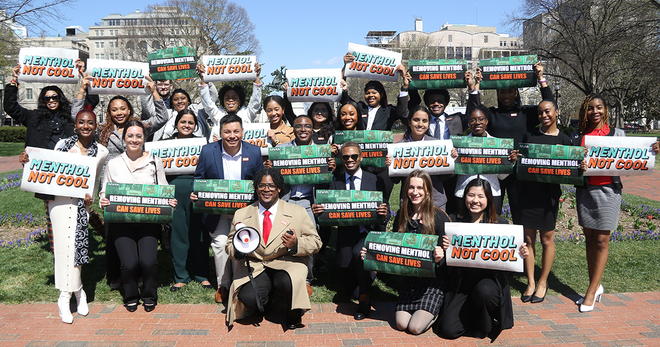FDA regulations on tobacco products welcomed, but FDA still has critical to-do list
By bringing all tobacco products under the agency’s jurisdiction, the U.S. Food and Drug Administration has, at long last, ended the Wild West of unregulated tobacco products with its “deeming regulation”. For too long cigars, hookah tobacco and e-cigarettes have proliferated without product standards, sales and consistent age limitations, or controls on claims about health effects. The FDA now has the opportunity to regulate how tobacco products are made, marketed and sold, to make them less toxic and addictive and less appealing to prospective users of all ages. This is a huge opportunity, and a huge challenge for an agency that needs to actively enforce the new regulations and review a host of product applications while also contending with a parade of tobacco industry lawyers poised to file suit.
This is a beginning rather than an end to a critical phase for the FDA. While youth cigarette use has dropped, use of little cigars and hookah, as well as e-cigarettes, has kept overall youth tobacco use flat. The deeming rules essentially bring the same limits on traditional cigarettes and smokeless tobacco to a fuller array of tobacco products: the ability to issue product standards for all regulated tobacco products to make them less toxic and addictive, and a nationwide standard making it illegal to sell any kind of tobacco product, including e-cigarettes, cigars and hookah, to anyone under the age of 18, or to sell them in vending machines. In two years, all products will finally carry warnings making clear that the products contain nicotine, and nicotine is an addictive chemical.
The FDA has also indicated they will soon propose rules banning use of “characterizing flavors” in cigars. That’s a change that can’t happen soon enough: an estimated 70 percent of all current youth tobacco users report using a flavored product in the past 30 days.
70%
70 percent of all current youth tobacco users report using a flavored product in the past 30 days
An estimated 4.7 million middle and high school students reported using one or more tobacco products within the past 30 days in 2015. Tobacco remains the leading preventable cause of death in the U.S., taking nearly half a million lives each year. Combustible tobacco such as cigarettes, cigars and hookah are the drivers of tobacco-related disease and death. We will need more than the deeming rules to tackle the appeal of combustible tobacco. We urge policymakers within the FDA and beyond to advance measures including:
- A ban across all tobacco products on menthol/mint flavors and the candy, fruit and alcohol flavors that appeal to youth. More than half of all young people who are regular cigarette users report using menthol products.
- Requiring retailers to keep tobacco products behind the counter, strong age verification requirements for Internet sales and minimum package size requirements for products such as little cigars.
- Cut off avenues tobacco companies are using to appeal to youth and young adults by restricting marketing with steps like taking e-cigarette advertising off television programs watched by young people and ending all tobacco product brand sponsorship of athletic, musical or cultural events or branding of non-tobacco products.
- Adopting product and manufacturing standards that reduce the toxicity and addictiveness of tobacco products to the lowest possible levels.
- A second run at graphic warning labels to apply those to all combustible tobacco products. Research has shown that such warning labels influence increased awareness and understanding of health effects and disease risk among users and nonusers, encourage users’ motivation and attempts to quit and stay off tobacco and discourage uptake of tobacco.
- Additional limits on youth access like raising the nationwide minimum age of sale for tobacco to age 21.
The FDA will now be responsible for reviewing a slew of new product applications to determine whether their introduction would protect rather than harm public health. Importantly, modified risk standards now automatically apply to newly deemed tobacco products, which means their manufacturers can no longer make claims about the relative risk or harm associated with their products without FDA evaluation and approval. That’s a critical change in the current landscape, as is the requirement that those who make electronic nicotine delivery systems actually disclose what’s in the products being inhaled by consumers.
The FDA will be on the spot to thoroughly and promptly review applications for the newly deemed products. While the tobacco industry will claim otherwise, the deeming rules pave the way for responsible innovation by offering clear paths for approval of products. In some cases that process might take three years or more – which is something we will need to watch carefully. Some electronic products may offer a reduced harm option for the millions of American smokers who have struggled to quit, and the new rules offer a path for manufacturers to make such claims if they can prove them.
The FDA is a critical partner in the fight to make tobacco a thing of the past. They still have an enormous amount to do to capture the opportunity to end youth tobacco use. And the beneficiaries of the status quo – the tobacco industry – will try to bury them in lawsuits and appeals. The tobacco industry is expert at turning small gaps into wide avenues for marketing addictive tobacco products, and the entire tobacco control community will be looking for signs of Joe Camel’s nose pushing under the tent.
FDA has much to do to build upon this foundation. They will have our help, as we will continue to speak, seek and spread the truth about tobacco, and nudge the agency to energetically assert their authority and responsibility for protecting the health and safety of the American people as they have done today.
More in tobacco prevention efforts
Want support quitting? Join EX Program
By clicking JOIN, you agree to the Terms, Text Message Terms and Privacy Policy.
Msg&Data rates may apply; msgs are automated.



